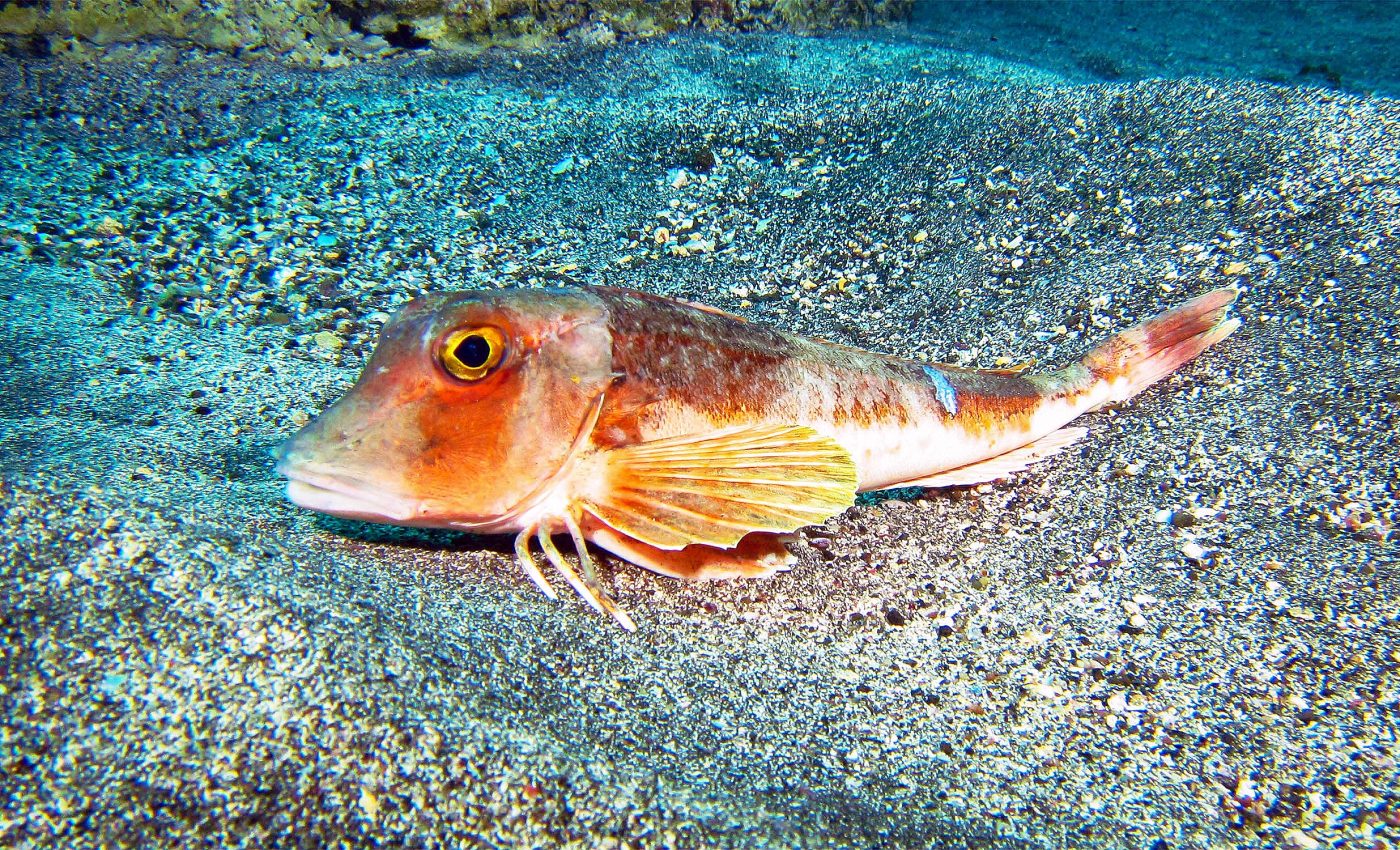
Fish called "sea robins" have real legs that they use to both walk and taste things
An evolutionary quirk exists in today’s world, but it lives in the ocean, so most of us will never actually be able to see it with our own eyes. But that doesn’t make it any less incredible! Sea robins are a species of fish that took to walking on the ocean floor instead of just swimming around like its relatives — and ended up growing legs to do so.
Sea robins and their walking legs exhibit an evolutionary anomaly that has transformed it from being a usual swimmer to an outstanding walker.
This creature has sprouted legs similar to those of a crab, and remarkably, uses them not just for walking but for finding buried prey by “tasting” the ocean floor — a fascinating trait not seen in their swimming relatives.
Legs of the sea robins
“This is a fish that grew legs using the same genes that contribute to the development of our limbs and then repurposed these legs to find prey using the same genes our tongues use to taste food — pretty wild,” says Nicholas Bellono of Harvard University in Cambridge, MA.
Intrigued by the sea robins’ unusual hunting prowess, they went ahead and further studied them.
They found out that the sea robins could indeed detect and uncover ground-up and filtered mussel extract, and even single amino acids.
This oddity had observant fellow fish hitching behind the sea robins to capitalize on their knack for unearthing buried goods.
Studying sea robin legs
As the research progressed, it was found that the ‘legs’ of the sea robins were covered in sensory papillae.
They also noticed that the sea robins would scratch at the sand surface to find buried prey, like mussels and other shellfish, without visual cues.
This indicated that their legs were sensitive to both mechanical and chemical stimuli.
They even tested this by burying capsules containing single chemicals, and the sea robins had no trouble finding them at all.
Sea robin genetics
Further developmental studies indicated that these papillae represented a significant evolutionary innovation, granting the sea robins a unique niche on the seafloor that other animals can’t replicate.
“Although many traits look new, they are usually built from genes and modules that have existed for a long time. That’s how evolution works: by tinkering with old pieces to build new things,” Kingsley commented.
A key finding from their studies identified an ancient and conserved transcription factor, tbx3a, as a significant determinant of the sea robins’ sensory leg development.
This gene played a crucial role in the formation of the sea robins’ sensory papillae and their digging behavior.
Power of adaptation
These researchers went beyond just studying a “fish with legs”; they also explored how this weird animal could serve as a powerful model organism to compare specialized traits and teach us about how evolution allows for adaptation to very specific environments.
About 6 million years ago, humans evolved to walk upright, separating themselves from their primate ancestors. Bipedalism is a defining feature of our species.
Sea robins and their adaptation to living on the ocean floor could provide insights into how this change may have occurred, allowing us to view evolution through a different lens.
Implications for biomedical research
The unique adaptations seen in the sea robin not only illuminate aspects of ecological evolution but also hold significant implications for biomedical research.
Understanding how the same genetic pathways are repurposed across different species for specialized functions could provide insights into human limb development and associated disorders.
This cross-species analysis underscores the potential for evolutionary models like the sea robin to offer unanticipated avenues in medical genetics.
This avenue of exploration could eventually aid in the development of innovative treatments for musculoskeletal and sensory conditions.
Evolved legs of sea robins
In a broader context, the study of sea robins serves as a fascinating case of convergent evolution, where similar traits arise independently in unrelated lineages.
This research bridges gaps between distant branches of life, offering a more comprehensive understanding of how complex structures can arise through subtle genetic shifts.
As we continue to uncover these kinds of evolutionary mysteries, we gain not only a deeper appreciation of these remarkable creatures but also a clearer picture of the shared biological heritage that links all forms of life.
Future directions
Beside their unique legs and overall phenotype, sea robins also offer a deeper understanding of the genetic control of complex traits and adaptations, and how these can evolve.
The research also paves the way for further studies to explore similar traits in other organisms.
Now, who would’ve thought that a bottom-dwelling fish could teach us so much about the complex interplay of genes and environment?
The study is published in the journal Current Biology.
—–
Like what you read? Subscribe to our newsletter for engaging articles, exclusive content, and the latest updates.
Check us out on EarthSnap, a free app brought to you by Eric Ralls and Earth.com.
—–













